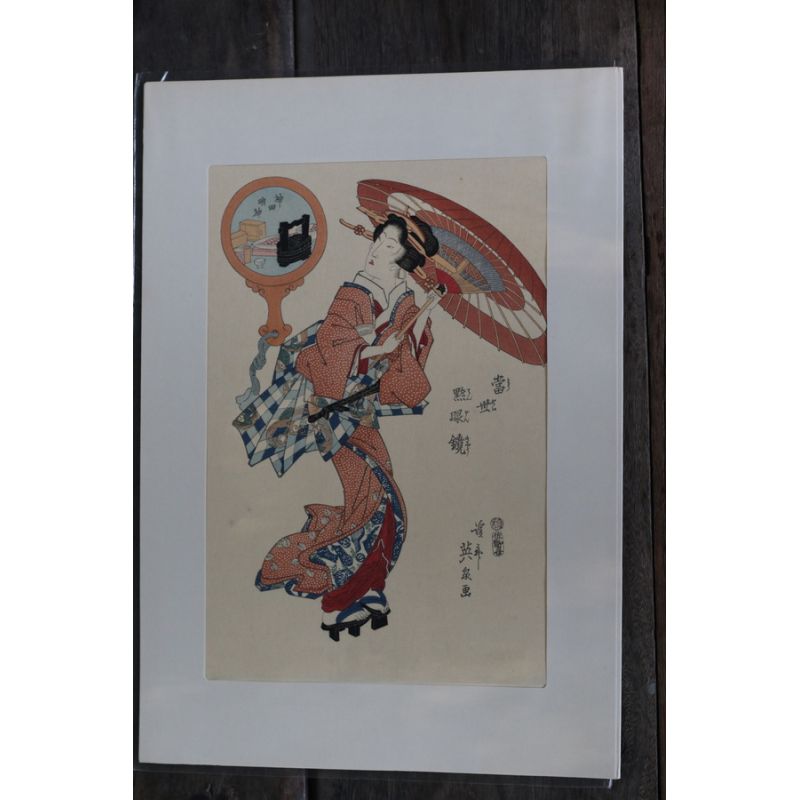











20th Century Japanese Hand-Painted Woodblock Print Reproduction Shōwa period (circa 1930s)
20th Century Japanese Hand-Painted Woodblock Print Reproduction
This rare collection features high-quality, hand-painted reproductions from the early Shōwa period (circa 1930s). These works faithfully recreate iconic 19th-century Japanese ukiyo-e woodblock prints, many of originals which are held in the permanent collections of major museums throughout Japan.
This print is reproduction of: "The Three Great Contemporary Magnifying Glasses originally by Artist: KEISAI EISEN, titled “Mirror of Contemporary Customs – Kanda Myojin”, a theme commonly depicted in early 20th-century traditional-style prints. The reproduction artist, or his lineage, are unknown.
Print produced on traditional Washi paper and comes with a white paper frame. print is in very good condition, with vivid colors and well-preserved paper, protected in individual nylon sleeves.
The Three Great Contemporary Magnifying Glasses
Condition:
Excellent for it's age. prints is vibrant, structurally sound, and complete with original paper mounts.
More Information about KEISAI EISEN and the print:
The Three Great Contemporary Magnifying Glasses
Keisai Eisen (original)
Reproduction Artist: Unknown
Hand-printed Woodblock Reproduction
Showa Period (20th Century), Postwar
Traditional Japanese woodblock printing on Washi paper
Paper frame size: 490 x 345 mm
Image window size: 365 x 340 mm
No reproduction artist’s signature present
Minor damage on the outer edge of the window frame; otherwise, very good
“The Three Great Contemporary Magnifying Glasses” is a satirical ukiyo-e work originally by Keisai Eisen, a prominent artist of the late Edo period. The image portrays a woman examining the world through a tengankyo, a traditional magnifying glass. Eisen cleverly uses this motif to humorously critique and reflect on the societal trends and behaviors of his time.
A tengankyo is a magnifying glass that was popular during the Edo period, especially among fortune-tellers who practiced physiognomy (face reading) and palmistry. It frequently appears in ukiyo-e prints as a symbol of observing the world—often used for satire or social commentary.
Period Active: Late Edo Period (early 19th century)
Born/Died: c. 1790 – 1848
Birthplace: Musashi Province (modern-day Tokyo)
Renowned for bijin-ga (pictures of beautiful women), with a refined, sensual style
Masterful depiction of skin tones and textiles, creating graceful and elegant compositions
Produced both standalone prints and illustrated books, including yomihon and kibyōshi
Began as an illustrator of narrative fiction
Influenced by Utagawa Toyokuni, later fully embraced ukiyo-e
Prolific creator of both beauty portraits and landscape prints
Adopted the name Keisai Eisen in his mature years